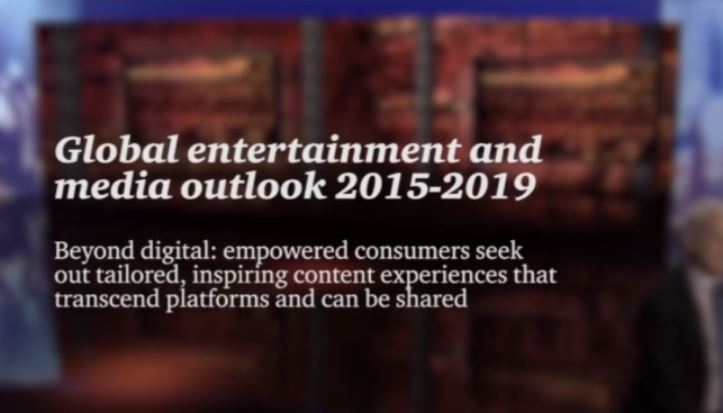It’s increasingly clear that consumers see no significant divide between digital and traditional media: what they want is more flexibility, freedom and convenience in when and how they consume their preferred content.
Total worldwide entertainment and media revenues will rise at a compound annual growth rate (CAGR) of 5.1% over the coming five years, from US$1.74trn in 2014 to US$2.23trn in 2019, according to PwC’s Global entertainment and media outlook 2015–2019.
While the pace of industry growth will vary widely in different markets—with Japan seeing the slowest growth at a CAGR of 0.9%, and Nigeria the fastest at 15.1%—it’s apparent that when consumers around the world become connected their behaviour becomes more similar, subject to two differentiators. The first is the quality of the available infrastructure for consuming content. The second is consumers’ common desire for content experiences that are relevant to them personally – which is why, even in a globalised world, meeting local preferences remains critical.
Consumers call the shots, as content experience trumps delivery platforms
Overall, what’s emerging is an environment where consumers regard any distinction between ‘digital’ and ‘non-digital’ as irrelevant. Instead of favouring one or the other, they’ve taken on board the proliferation of content and access options enabled by digital, and are exploiting it to seek more flexibility and freedom—for which read ‘choice’—in what, when and how they consume. In making these choices, they’re migrating to offerings that combine relevance and convenience—attractive content, easy discovery, social community—with an inspiring, personalised experience, however it’s delivered.
Marcel Fenez, PwC’s Global leader, entertainment and media, comments: “Digital or non-digital—for consumers it’s all about content experiences. Given the wide variations in consumer preferences, the challenge for entertainment and media companies is to blend data insights and consumer intuition to maximise the value of the experiences they offer. The prize for achieving this is heightened by the fact that the consumer has never been more up for grabs than today.”
Underlying the trends in entertainment and media spending detailed in the Outlook is the migration by consumers worldwide to new ways of consuming content. One of the clearest shifts is in TV and video consumption, with consumers increasingly demanding high-quality original programming in a flexible, on-demand manner across numerous devices—thus enabling ‘binge viewing’ and greater convenience. OTT services offer the best outlet for this type of consumption, helping to explain why North American subscription TV penetration is forecast to fall from 79.8% in 2012 to 78.1% in 2016.
Summing up the implications of this year’s Outlook for companies, Marcel Fenez comments: “Against a background of shifting infrastructure and diverse local tastes, entertainment and media companies across the world need to embrace the consumption experience as their critical success factor. What matters is the ability to combine content with a user experience that’s differentiated and compelling on the consumer’s platform of choice.
“To achieve this blend, companies need to do three things: first, innovate around the product and the user experience; second, develop seamless consumer relationships across distribution channels; and third, put mobile (and increasingly video) at the centre.”

















